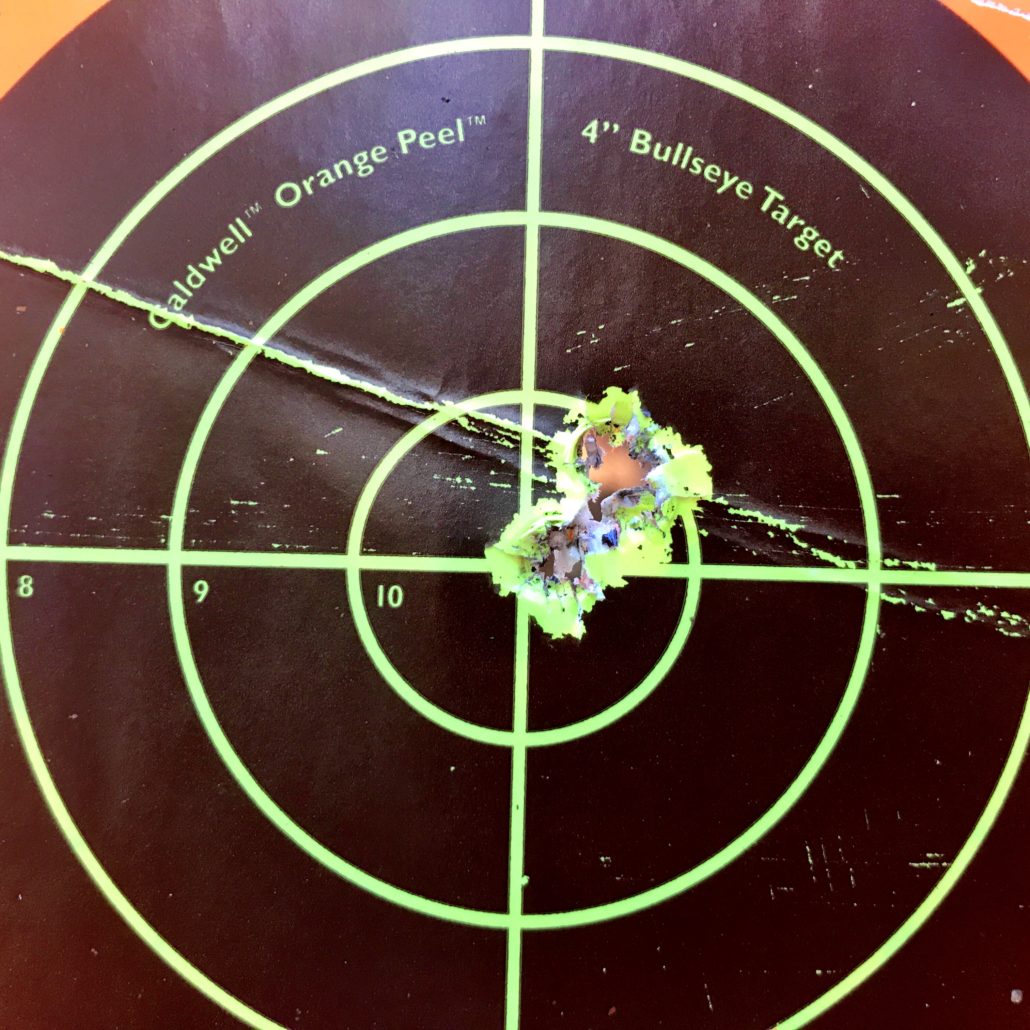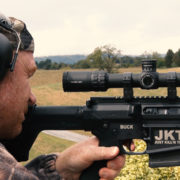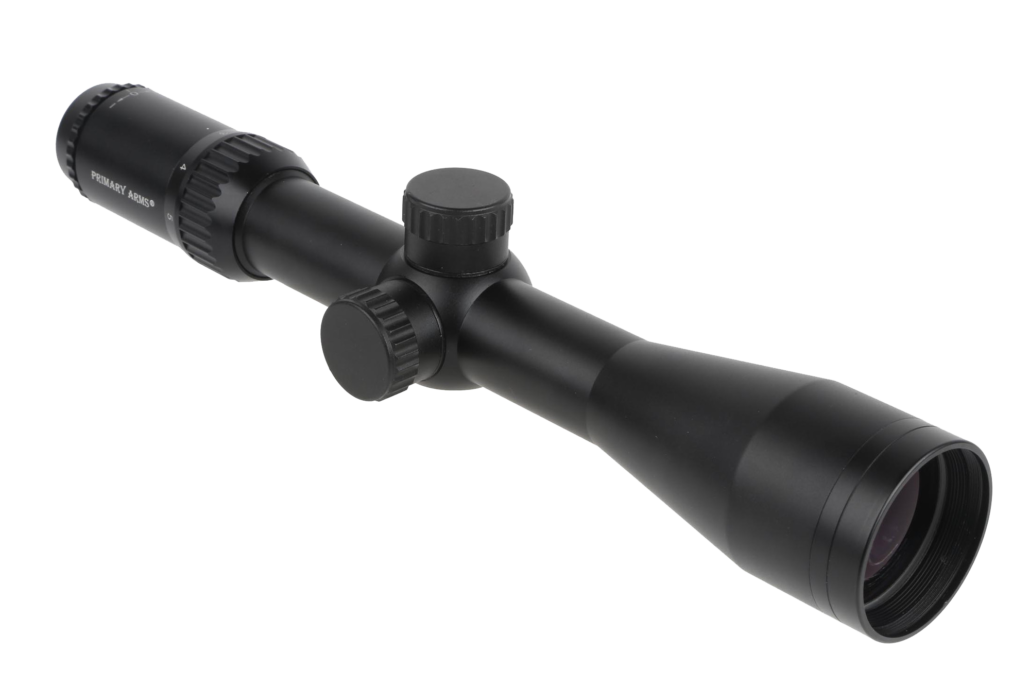The MSR Rifle for Hunting: Not Your Granddaddy’s Gun
Buck and I hear it every day: “I can’t believe you guys hunt with an assault rifle,” or “Why do you use an AR to hunt with, they aren’t guns for hunting,” or “Those rifles you boys hunt with are dangerous.” It saddens me to see how many misconceptions people have about the Modern Sporting Rifle (MSR), AR, black rifle, or whatever name you use to describe what is now easily the most well known firearm in America.
Facts About the AR Platform
Let’s start with some facts about the AR platform before we discuss why the AR lends itself so well to the hunting environment.
- The “AR” in “AR-15” stands for ArmaLite, the company that developed the rifle in the 1950s. “AR” does NOT stand for “assault rifle” or “automatic rifle.”
- The AR was first developed in 1956, and has been sold commercially to the American public since the 1960s.
- There are 393,347,000 gun owners in the U.S.; over 10,000,000 of those own an MSR.
Let’s look at the most common myth I hear about AR platform rifles: ARs are a military rifle; they have no place in the woods. This myth comes from a combination of ignorance and the media’s characterization of AR platform guns as “assault rifles.” The truth is that hunters have taken guns to the field that they first used in the military for generations. Your grandfather’s bolt-action rifle was probably the same gun he used when he served in the military. From the flintlock to the AR, most of the rifle action styles used by hunters started as sporterised versions of rifles that were first used by the military.
Think about it. If you were relying on a rifle to keep you safe, you would know everything about that rifle: how it functions, how to effectively clean it, how to completely disassemble and maintain it, and how to repair it. When you return home from military service and want to get back into the woods you grew up hunting in, what’s the most likely rifle you are going to reach for? That’s right, that trusty ole AR that got you home safe. You know it, you trust it, you believe in it.
But what about the rest of us, who never served in the military? Why should we consider the AR platform rifle for our hunting needs? There are a couple of reasons an AR makes an excellent choice for game hunting. The first reason is that the platform is modular, which allows for easy customization.
Ease of Customization
One of the attractions of the AR/MSR platform is how easy it is to customize to an individual’s hunting style, or type of critter. In contrast, your dad’s Remington model 700 or 99 Savage had very limited add-ons. You could find a sling, a bipod, a few optics mounting choices, and that was about it. On the AR/MSR, the options are nearly endless. Stock variations, brakes and flash guards, hand grips, forearm styles, light mounts, bipods systems, and variability in magazine capacity are just a few of the aspects of the AR/MSR that the hunter can customize.
There are also lots of options for customizing the look of the rifle, such as personalized lowers, Keronite, and airbrush finishes. With the AR platform, you can create a one-of-a-kind rifle at a reasonable cost. In the past, if you wanted a customized rifle, you had to have deep pockets and be willing to wait a year or two to have a custom shop build it.
Simple Field Repair
This is what I consider the best reason to use the AR/MSR platform in the hunting world: simple field repair. On most other firearms, repairs are difficult and time consuming, and may require special tools or a gunsmith. Most repairs are much simpler on the AR/MSR platform. Did a firing pin break on your Remington 700? You’d better have the bolt tool and a dedicated work area to take the bolt apart. More likely, the repair requires a trip to a gunsmith. With an AR/MSR, if you have the inexpensive firing pin, something with a pointed tip (we have used bullets before in a pinch), and a bit of easily acquired knowledge, you can repair your rifle in the field. Simply lay your AR out on a small rag on the ground, disassemble it, replace the firing pin, and reassemble the bolt carrier group in five minutes. And be back hunting. Try that with any traditional-style hunting rifle. And that’s just one example of the many end user fixes that the AR/MSR allows over your Granddad’s hunting rifle. Shoot a barrel out? Buy another barreled upper, and it’s plug and play. No gunsmith required. Want a better trigger? Order a drop in model. I could go on and on detailing the user-installable upgrades to these rifles.
Accuracy
Some people have asked me about the accuracy of the AR platform rifle. I have several AR15s and AR10s that will shoot bone stock just as well as any of my Remington 700s. Don’t be concerned. The accuracy is there.

AR Platform Manufacturers
If you decide to buy an AR platform rifle for your hunting needs, you will need to choose a manufacturer. If you search the web for AR manufacturers, the list will be long. There are many good makers of the AR/MSR platform out there, and a few that aren’t that great. Before you buy, read reviews and ask friends that own AR platform rifles what they like and don’t like and why. As for us, we shoot Anderson Manufacturing RF-85 treated rifles in field.
Over the past nine years, we have watched Anderson Manufacturing become the number one AR/MSR manufacturer in the country. We believe this in part due to their proprietary RF-85 process. RF-85 stands for “reduced friction by 85%.” And that’s not just hype. In our experience, it works, plain and simple. Anderson bills their rifles as “The Worlds only No-Lube Rifles.” We have tested this statement and can verify it’s true. RF-85 works as advertised. In addition, almost the entire rifle is manufactured in-house in Hebron, Kentucky. Anderson Manufacturing is also a family-owned business employing a lot of veterans, and that’s an even bigger win in our book.
Optics
Now no matter how good the rifle, it isn’t worth squat if one can’t hit what they can’t see. So, you will want to purchase excellent optics for your AR. As the options and accessories for the AR/MSR rifle have evolved over the past decade, so have the specialized optics available to tackle any situation you may desire. There are several optics manufactures out there making good glass for the AR/MSR.
In recent years, we have become fond of a line of optics manufactured by Primary Arms, in Houston, Texas. Their glass is affordable; they make dozens of models in different classes, styles, magnifications, and reticle choices. Primary Arms is newer to the optics world, and the cost-to-quality ratio is excellent. If you want good glass without breaking the bank, you should give them a serious look. A little birdie told us that their PA1-6X24SFP-ACSS-5.56 is currently their best-selling optic, and with good reason.
Did we mention that the picatinny rail mounting system on the AR/MSR rifles offer fast and easy swapping of optics and rings. We like the Talley tactical rings. They are bullet-proof and are simple to use.
Multiple Rifle Calibers
A final thing I love about the AR/MSR platform for hunting is the ability to rapidly switch rifle calibers. You can purchase just one lower, order several complete uppers, and mount optics on each. You then have the option to have a different caliber rifle already sighted in and ready to go hunting by simply swapping the complete uppers out. Imagine trying to accomplish that with your Remington 700, or Ruger no 1.
The MSR – Not Your Grandaddy’s Gun
So folks, like them or not, the AR/MSR platform is fast becoming the working man’s hunting rifle of choice. It is simply more durable, easier to repair, provides more choices, is more user-modifiable, and is less expensive overall than most traditional hunting rifles. Be safe out there in the woods, and enjoy your tree time.




